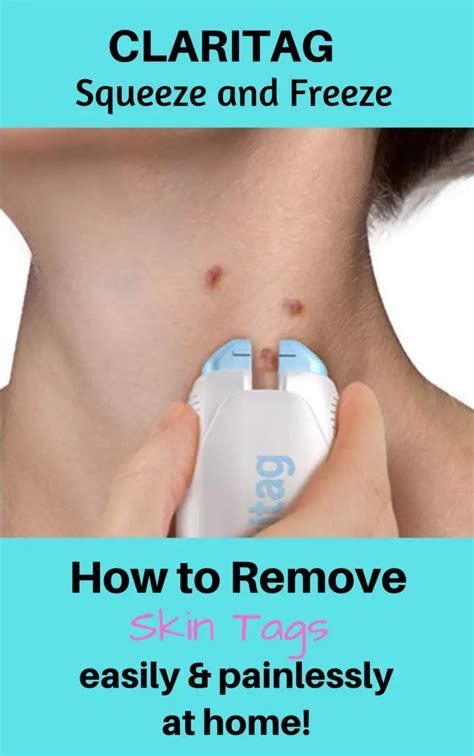Is Freezing the Best Way to Remove Skin Tags?
Skin tags, those small, benign skin growths, can be a nuisance. While often harmless, their appearance can be bothersome, leading many to seek removal. Freezing, or cryotherapy, is a popular method, but is it the best? This article explores cryotherapy and other skin tag removal options, helping you determine the most suitable approach for your situation.
What is Cryotherapy for Skin Tags?
Cryotherapy involves freezing the skin tag with liquid nitrogen. The extreme cold destroys the cells of the skin tag, causing it to eventually fall off. It's a relatively quick procedure, often completed in a doctor's office or dermatologist's clinic. The process itself is typically described as feeling like a quick pinch or stinging sensation.
How Effective is Freezing Skin Tags?
Cryotherapy is generally effective for removing smaller skin tags. Success rates vary depending on the size and location of the tag, as well as the skill of the practitioner. While often successful, multiple treatments might be necessary for larger or more stubborn tags. Furthermore, cryotherapy may not be suitable for all skin tag types or locations.
What are the Side Effects of Freezing Skin Tags?
While generally safe, cryotherapy can have side effects, including:
- Blistering: A common side effect, blistering usually heals within a week or two.
- Scarring: While uncommon, scarring is a possibility, particularly with improper technique.
- Hypopigmentation: A lightening of the skin around the treated area. This usually fades over time.
- Hyperpigmentation: A darkening of the skin around the treated area. This also typically fades.
- Infection: Although rare, infection is a risk with any skin procedure.
Are There Other Ways to Remove Skin Tags?
Yes, several methods exist for skin tag removal, each with its own advantages and disadvantages:
- Surgical excision: This involves surgically cutting off the skin tag. It's highly effective but leaves a small scar.
- Ligation: A small piece of surgical thread is tied tightly around the base of the skin tag, cutting off its blood supply and causing it to fall off. This is usually less invasive than excision.
- Electrocautery: Using heat to destroy the skin tag. This method is also quick and effective.
- Home remedies: Various home remedies are suggested, such as apple cider vinegar or tea tree oil. However, it's crucial to consult a dermatologist before attempting any home remedy, as they may not be effective and could potentially cause harm or infection.
Is Freezing Better Than Other Methods?
There's no single "best" method for removing skin tags. The optimal approach depends on factors such as:
- Size and location of the skin tag: Smaller tags are often best treated with cryotherapy, while larger tags may require surgical excision.
- Individual preferences: Some individuals prefer the less invasive nature of cryotherapy, while others may opt for a more definitive method like surgical excision.
- Skin type and sensitivity: The risk of scarring or other side effects may vary depending on skin type.
What Should I Do If I Have a Skin Tag?
If you have a skin tag that bothers you, the best course of action is to consult a dermatologist or healthcare professional. They can properly diagnose the growth, assess its size and location, and recommend the most appropriate removal method based on your individual needs and circumstances. They can also help rule out any other skin conditions.
What Happens After Cryotherapy for Skin Tag Removal?
After cryotherapy, the treated area may be slightly swollen, red, or blistered. Keep the area clean and dry to minimize the risk of infection. Your doctor will provide specific post-treatment instructions. The skin tag will usually fall off within a few weeks.
Is Freezing Painful?
The pain level during cryotherapy varies from person to person. Most people describe it as a quick pinch or stinging sensation. Your doctor may apply a numbing cream before the procedure to minimize any discomfort.
By understanding the different removal methods and considering your individual circumstances, you can make an informed decision about the best way to address your skin tags. Always seek professional medical advice before attempting any skin tag removal technique.

